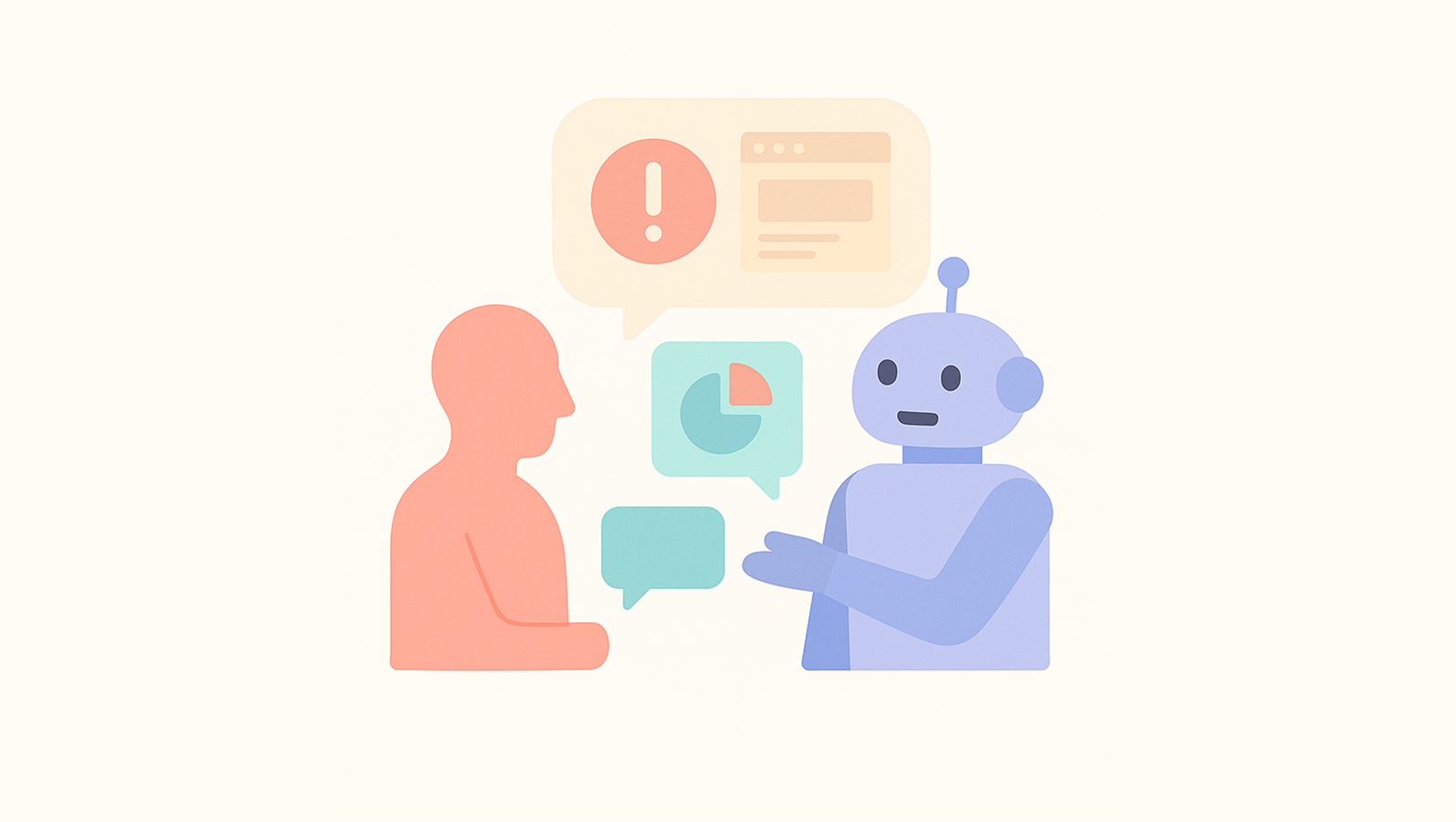AI Interviews: Balancing Structure and Flexibility
When you’re running a user interview, there’s always a tension between staying on track and following where the conversation naturally leads. The same applies to AI-moderated interviews.
In our latest webinar, we explored what it means to balance structure and flexibility in AI interviews, why it matters, and how to design your discussion flow so your AI moderator can probe meaningfully without going off the rails.
Why This Balance Matters
At their core, AI-moderated interviews are only as good as their design. The prompts, rules, and context you feed into your AI determine how the session unfolds — what gets asked, what gets skipped, and how deep the conversation goes.
That’s where structure and flexibility come in:
- Structure ensures your interviews stay aligned with goals. It defines the must-cover areas, comparable metrics, and consistent questions that let you draw patterns across participants.
- Flexibility lets the AI adapt. It opens the door for richer, more contextual insights by allowing follow-ups that respond to what participants actually say.
If you over-structure, you risk turning your AI into a form-filling survey.
If you go too flexible, you end up with fragmented conversations that are hard to synthesize.
Balancing both gives you the best of both worlds: rigor and richness.
The Anatomy of Structure in AI Interviews
Think of structure as the interview’s spine. It’s what ensures that every conversation — whether it’s with a PM, designer, or end user — ladders up to your research goals.
Structure can include:
- Anchor questions: the non-negotiables that must appear in every interview.
- Themes and topics: groupings that organize your study (e.g., motivation, usability, value).
- Logic boundaries: rules that prevent the AI from wandering too far or looping endlessly.
- Timing or length constraints: helping the moderator manage pace and depth.
These give your AI a clear path, ensuring that every conversation remains grounded in purpose.
What Flexibility Looks Like in Practice
Flexibility is the art of giving your AI enough freedom to follow the participant’s lead. When a human researcher hears something intriguing, they instinctively follow up:
“That’s interesting — can you tell me more about what made that difficult?”
That’s exactly what AI moderators should do too — within defined boundaries.
Flexibility shows up when your AI can:
- Recognize key terms or emotional cues and probe deeper.
- Skip irrelevant branches if the context doesn’t apply.
- Summarize what’s been said and pivot intelligently (“Got it, now let’s talk about how you handled that situation.”).
- Ask clarifying or comparative questions to uncover nuance.
In essence, flexibility transforms your AI from a scripted bot into a thoughtful interviewer.
How to Design for Both
Here are five key principles we covered in the webinar to help you build structured yet adaptive AI interviews:
1. Start with anchors — not scripts
Define 3–5 core anchors that capture the essence of what you’re trying to learn.
For example: “How do you measure success in your product experiments?”
From there, build optional follow-ups that the AI can trigger contextually, such as:
“If participant mentions metrics → ask what tools they use for tracking.”
This approach gives your moderator flexibility to explore without losing its north star.
2. Visualize branching logic
Think of your interview as a tree, not a line.
Branches represent conditional follow-ups, while the trunk is your consistent structure.
Tools like Hubble’s AI moderator make it easy to design these trees visually by letting you see where questions flow, where they merge, and where the AI should stop probing.
When you see the structure mapped out, it’s easier to identify where flexibility is adding value versus where it risks confusion.
3. Define guardrails for deviation
Even flexibility needs limits.
If your AI keeps chasing tangents or probing endlessly, you’ll end up with scattered data.
Set clear rules for return:
- Limit probe depth (e.g., 2–3 layers deep per topic).
- Create “return to main topic” cues.
- Cap time per section to avoid runaway threads.
These constraints don’t limit creativity — they channel it.
4. Monitor and refine with real runs
Once you’ve deployed your study, don’t stop at setup.
Review the conversation paths your AI takes.
Which follow-ups produce new insights?
Which paths feel repetitive or irrelevant?
Hubble’s analytics and conversation logs simplifies the process by visualizing how often each path was triggered and refine your logic accordingly.
Over time, your AI moderator becomes sharper, more contextually aware, and more aligned with how your team actually learns.
5. Encourage contextual grounding
AI moderation works best when the system understands why it’s asking something.
Feed your moderator context — who the participant is, what the study is about, and what the company’s priorities are.
This lets your AI ask more relevant questions, such as:
“You mentioned Amplitude earlier — how does it fit into your product decision workflow?”
That’s a world apart from a generic:
“Tell me more about your tools.”
Grounding your probes in context makes flexibility purposeful.
FAQs
Striking the right balance ensures that your AI moderator can stay aligned with your research goals while still adapting naturally to participants’ responses. Structure keeps interviews consistent and measurable; flexibility allows for discovery and depth — together, they create conversations that feel both rigorous and human.
An overly structured AI may sound robotic and miss valuable insights, while one that’s too flexible can produce scattered, inconsistent data. Monitoring transcripts and analyzing conversation paths help you refine the right balance — tightening where the AI drifts and expanding where it cuts off prematurely.
Start with clear anchor questions and branching logic. Define which follow-ups are optional and where the AI should return to core themes. Limiting probe depth (for example, two or three layers per topic) helps keep discussions relevant while giving participants room to elaborate.
Run pilot interviews and review transcripts for signal quality. Look for moments where follow-ups led to new insights or where the AI stalled or repeated itself. Iterating on your logic map after each round ensures your structure supports flexibility — not restricts it.










